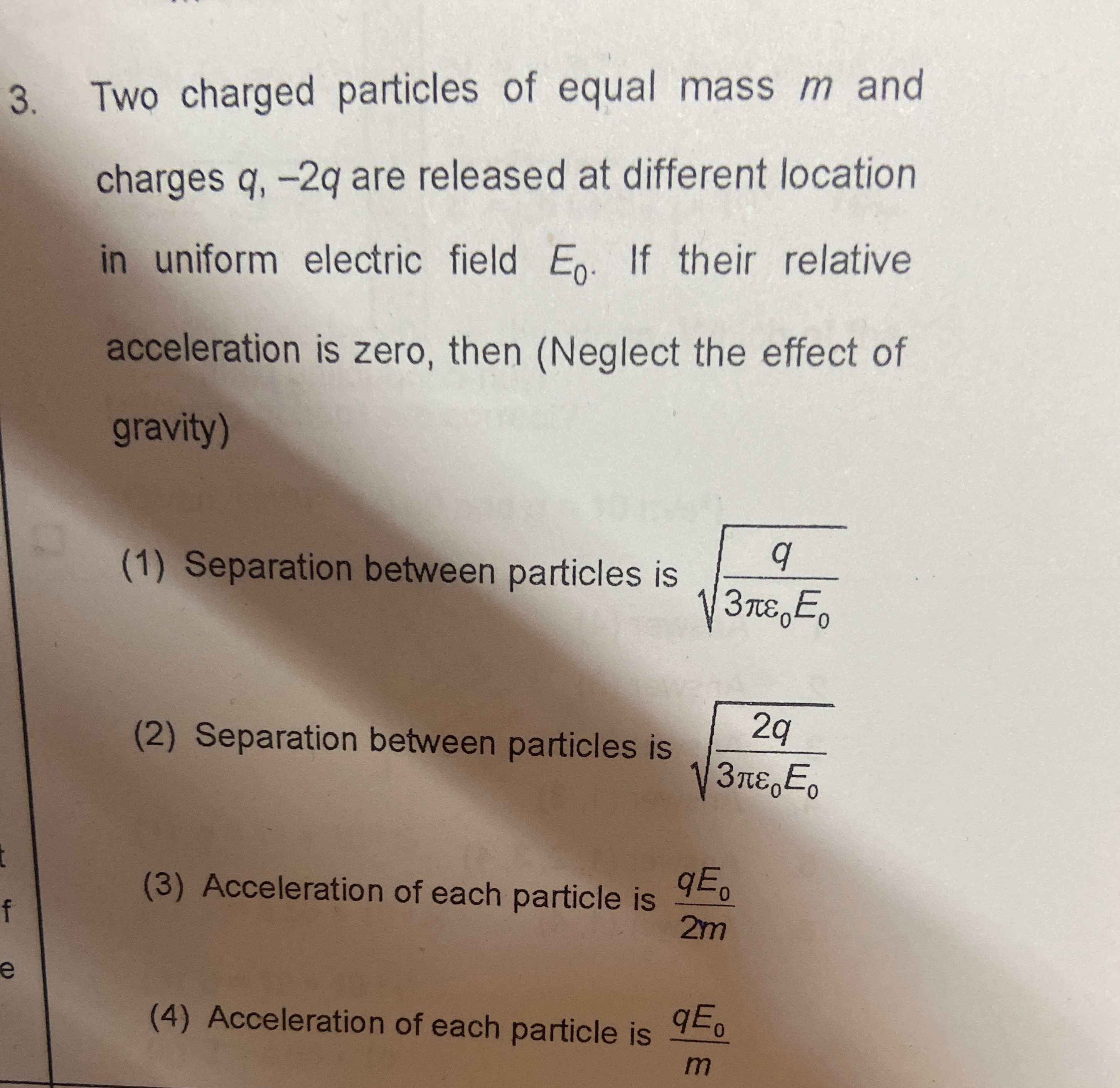Question
Question: Two charged particles of equal mass m and charges q, -2q are released at different location in unifo...
Two charged particles of equal mass m and charges q, -2q are released at different location in uniform electric field E0. If their relative acceleration is zero, then (Neglect the effect of gravity)

Separation between particles is 3πϵ0E0q
Separation between particles is 3πϵ0E02q
Acceleration of each particle is 2mqE0
Acceleration of each particle is mqE0
Separation between particles is 3πϵ0E0q and Acceleration of each particle is $\frac{qE_0}{2m}
Solution
Let the particles have charges q and −2q (both of mass m). The net forces acting on the particles in the uniform electric field E0 are:
For particle 1:
ma1=qE0+F12,where F12=r2k(q)(−2q)=−r22kq2.So,
ma1=qE0−r22kq2.For particle 2:
ma2=−2qE0+F21,with F21=r2k(−2q)(q)=−r22kq2.But note that due to Newton's third law, the force on particle 2 due to particle 1 is actually in the opposite direction:
F21=r22kq2.Thus,
ma2=−2qE0+r22kq2.The condition for zero relative acceleration is:
a1=a2Hence,
qE0−r22kq2=−2qE0+r22kq2.Rearrange:
qE0+2qE0=r22kq2+r22kq2⟹3qE0=r24kq2.Cancel q (assuming q=0):
3E0=r24kq⟹r2=3E04kq.Since k=4πϵ01,
r2=3E04(4πϵ01)q=3πϵ0E0q, r=3πϵ0E0q.Now, substitute r2 back to find the acceleration. For particle 1:
ma1=qE0−r22kq2.But,
r22kq2=3E04kq2kq2=4kq2kq2⋅3E0=23qE0.Thus,
ma1=qE0−23qE0=−2qE0, a1=−2mqE0.The negative sign indicates the direction; the magnitude of the acceleration is 2mqE0. Similarly, one finds the same magnitude for a2.
